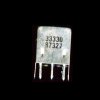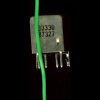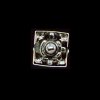forever99482
New Member
Hi, I've got a question about the circuit below
**broken link removed**
As it is using a TCA440, the oscillator and mixer is actually in it, and I cannot test to see the output from the Variable Freq Oscillator(kank3333r part), any ideas of how I could test to see the output of the VFO is correct?
By the way, can anyone find the datasheet of kank3333r?? I googled it and can't seem to find the datasheet of it.
Thanks in advance
**broken link removed**
As it is using a TCA440, the oscillator and mixer is actually in it, and I cannot test to see the output from the Variable Freq Oscillator(kank3333r part), any ideas of how I could test to see the output of the VFO is correct?
By the way, can anyone find the datasheet of kank3333r?? I googled it and can't seem to find the datasheet of it.
Thanks in advance



